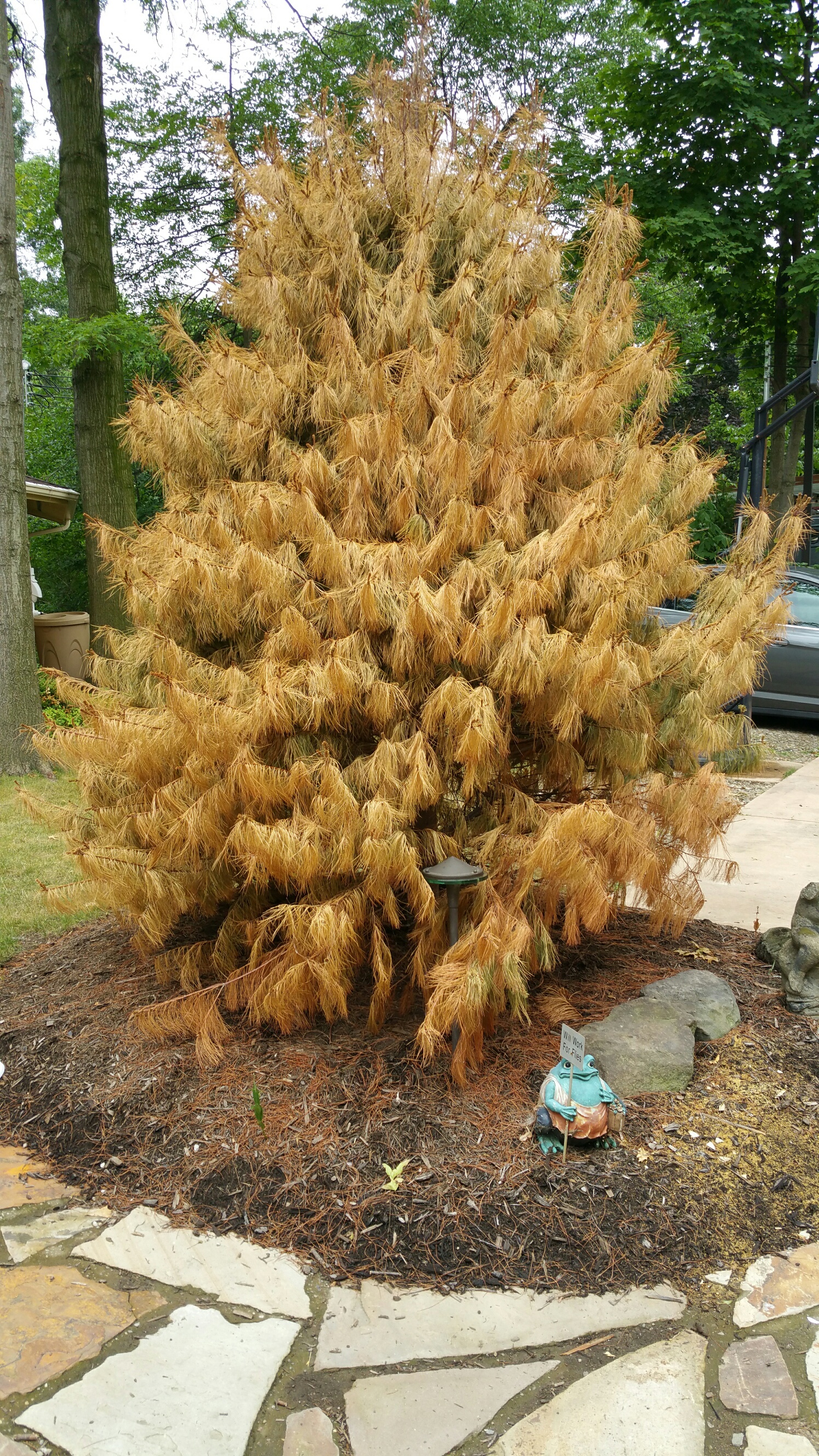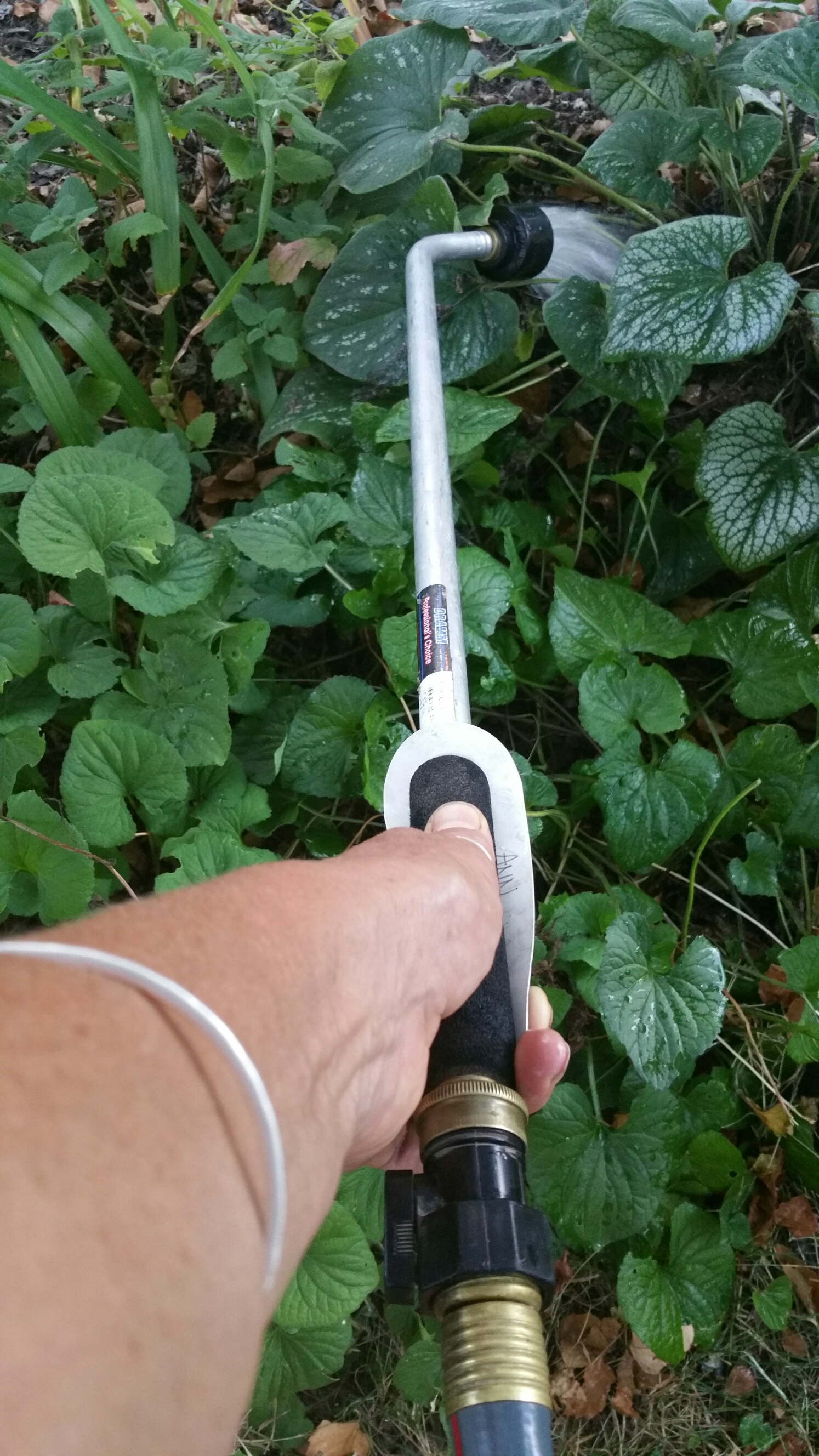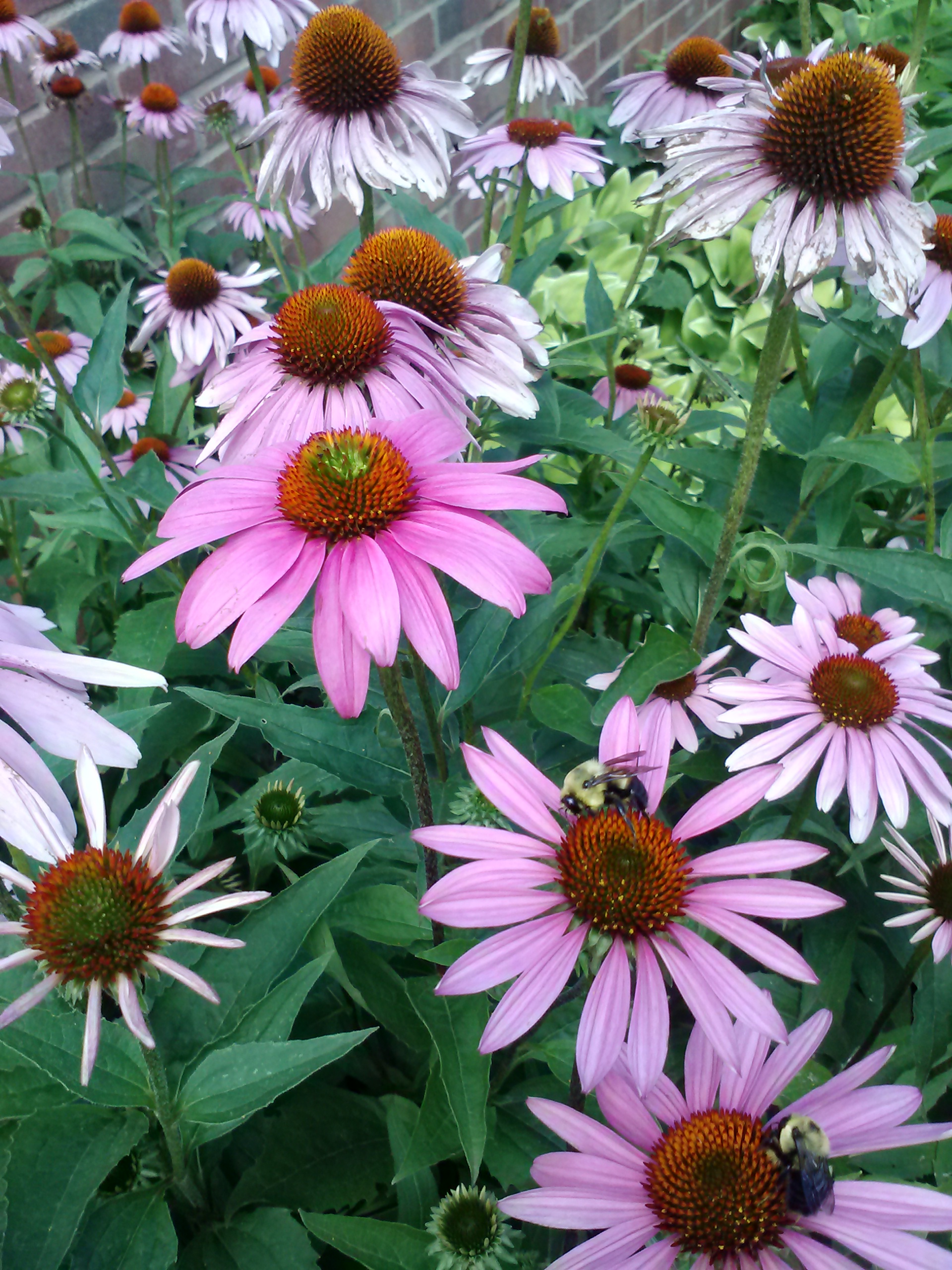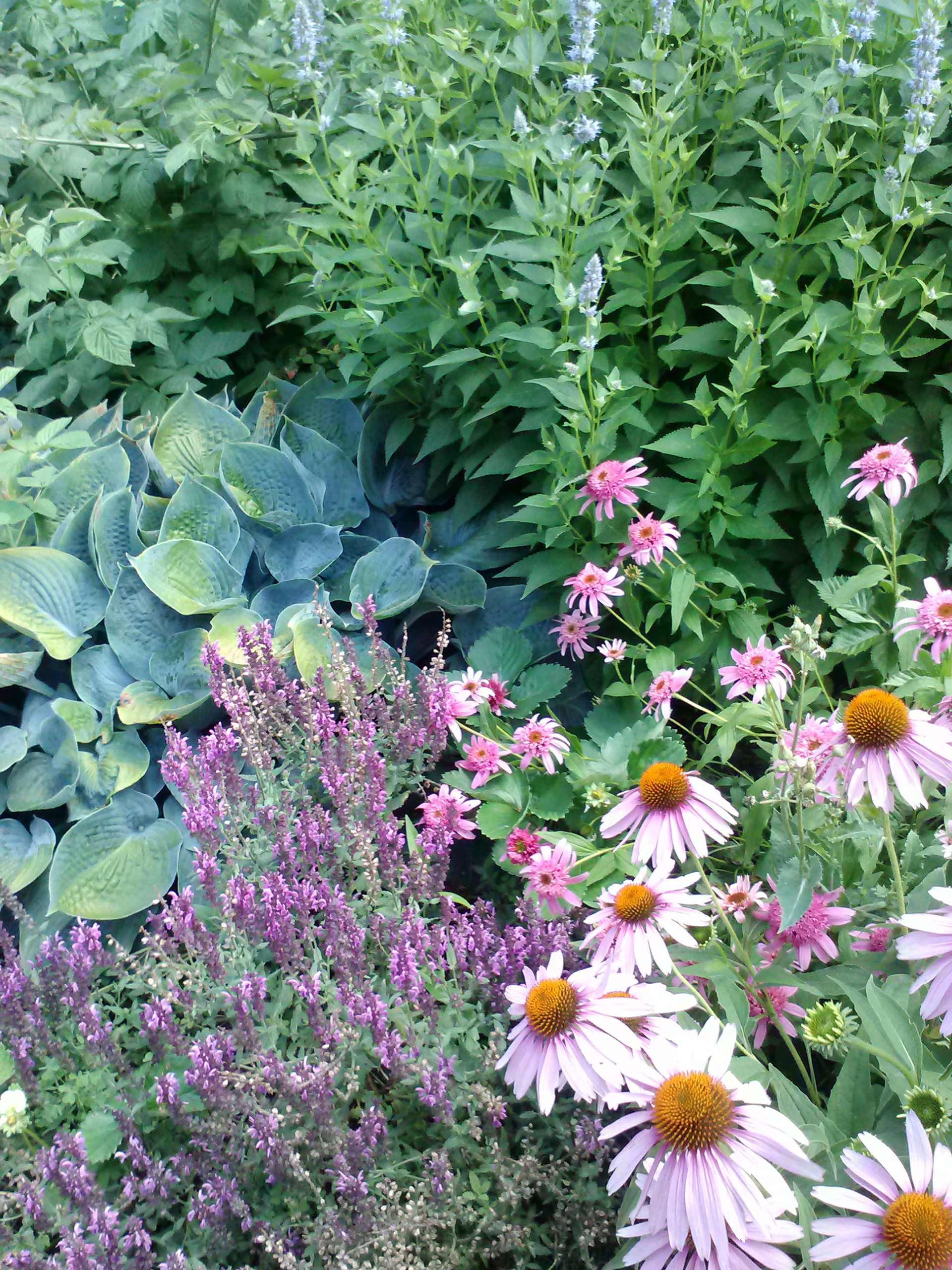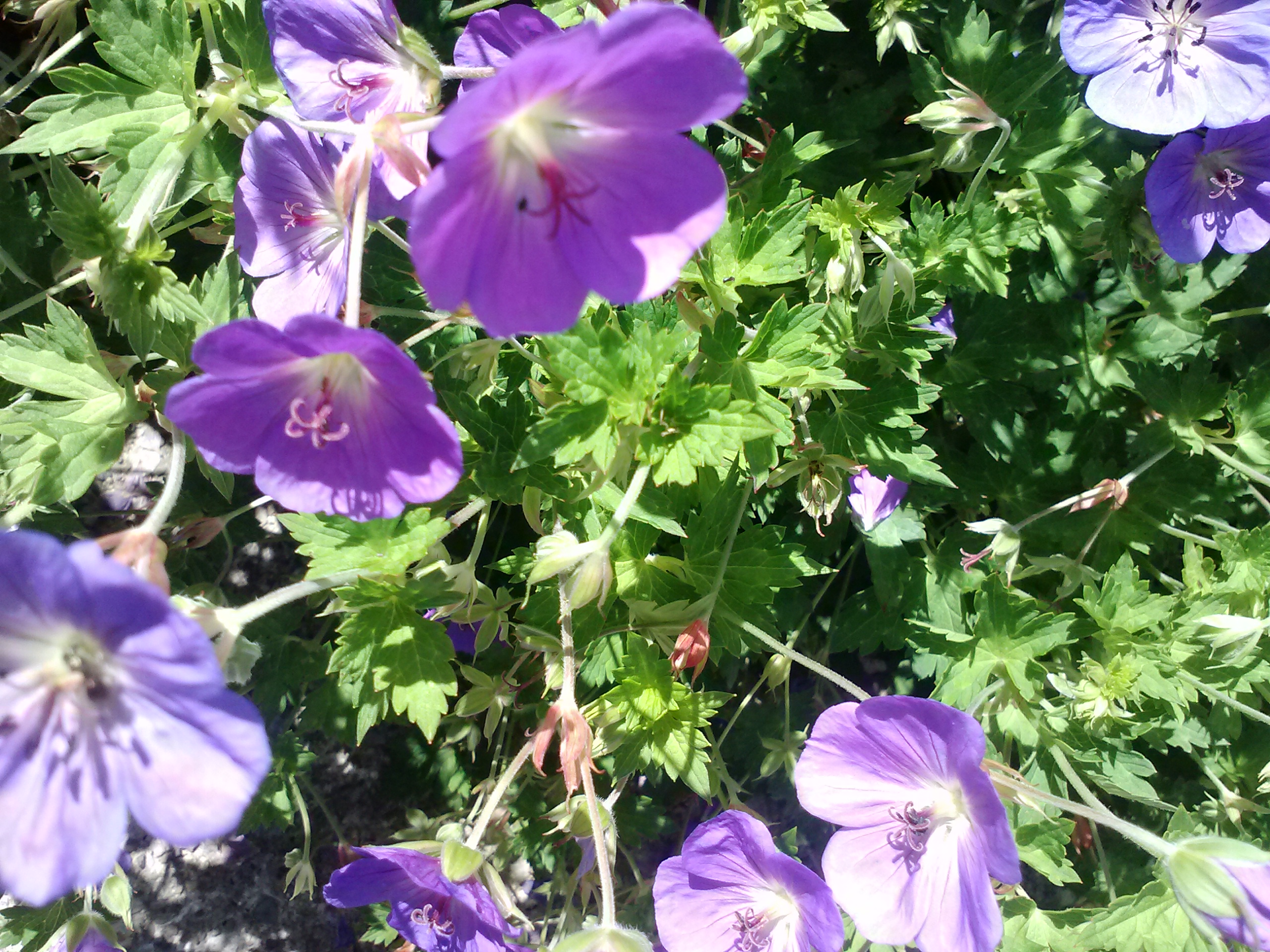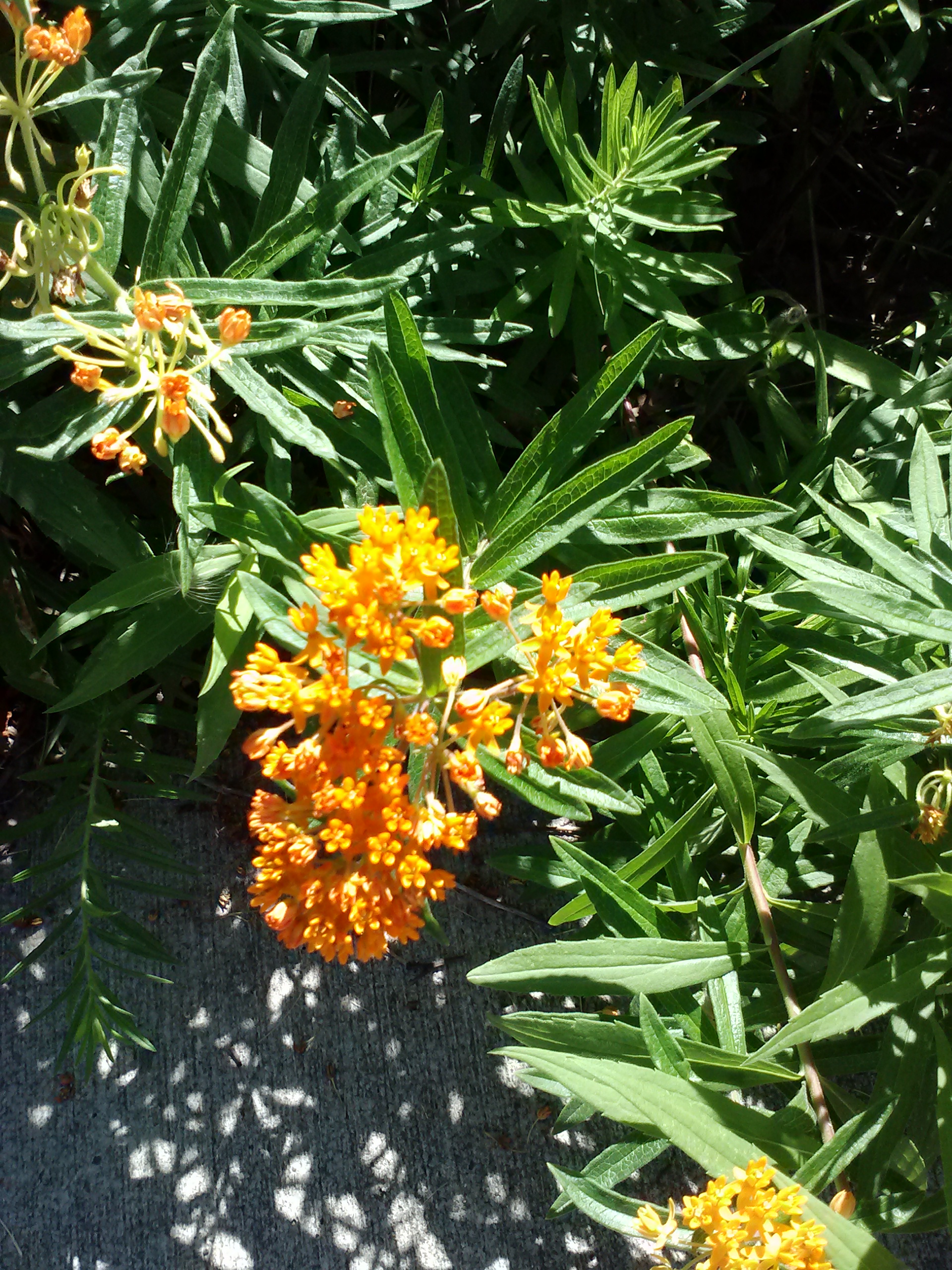by Elsa Johnson
I’ve been visiting Kingwood most of my life – so far back, anyway, that I cannot remember the first time… but when I ask other Clevelanders, including gardeners, if they have been to Kingwood, most of them do not know Kingwood exists, even though it is a relatively easy one and a half hour drive down route 71.
Kingwood is a – sort of – example example of the English Landscape School, the garden style (or estate style) that did away with formalism in the late 18th century, and in its place offered idyllic pastoral landscapes that typically included gently rolling lawns interspersed with specimen trees, re-creations of formal classical architecture (‘follies’) punctuating the ends of long sweeps of lawn, lakes and views, and curving and meandering pathways, all offering and supporting views of idealized nature. All this was very different from the formal geometrical gardens that had come before.

Kingwood, at a slight 47 acres, is this in miniature. To visit Kingwood is to feel you have stepped back in time and place, as if to Jane Austen country. This could be the estate of someone from the minor nobility or the well-off established gentry – not really quite grand enough to be the estate of landed high aristocrats, but a long, long, long way from the hoi polloi.
It is the brick mansion and other architectural works that establish this tone, set like a gems in their park-like setting, but it is the gardens that flesh out this fantasy. One without the other would not be nearly as wonderful.
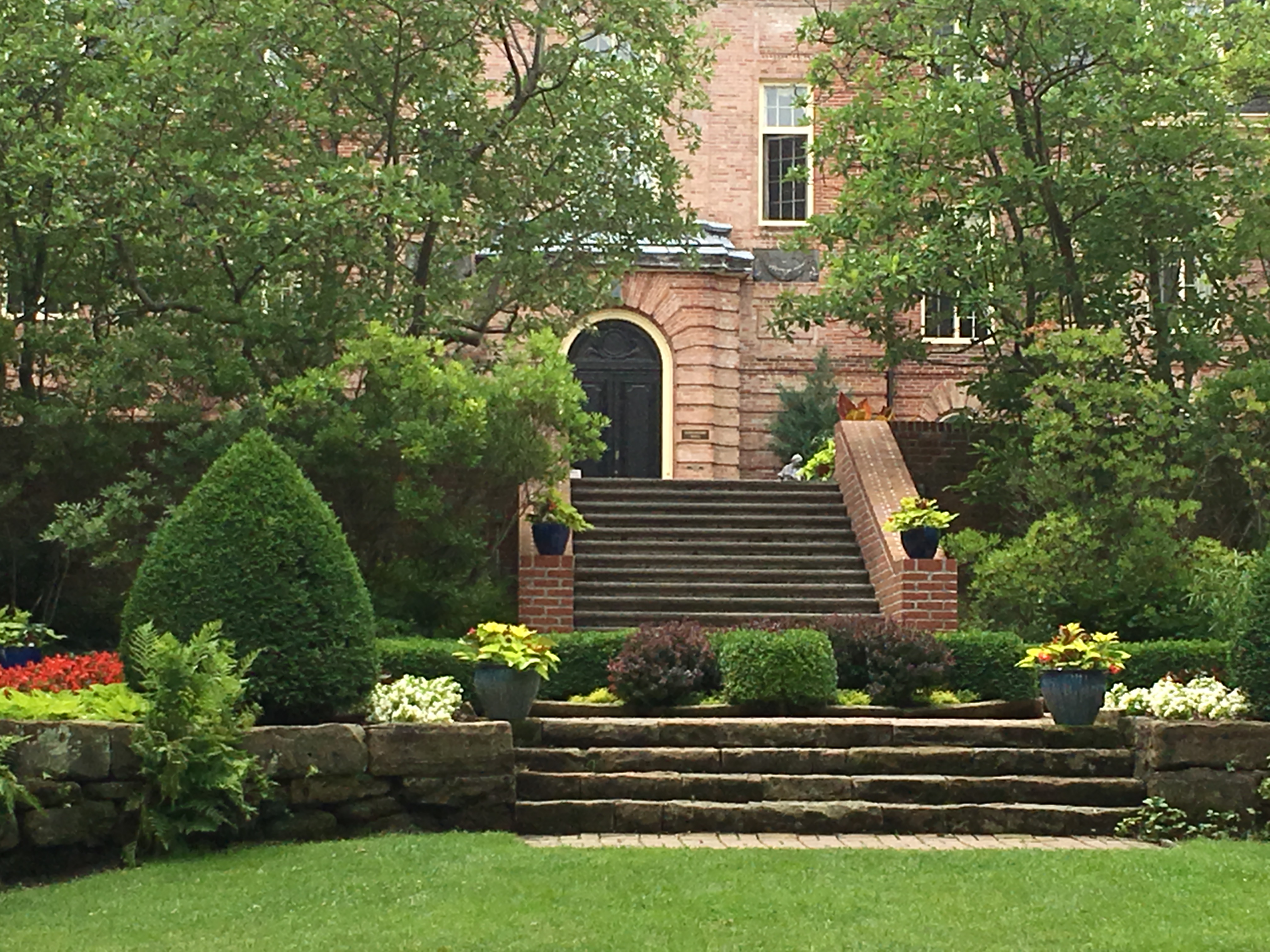
The mansion sits set into a hillside off in the center of the property, but this center feels like the cornerstone, as the southwest quadrant of the estate is mostly woodland and remains outside of one’s awareness. One arrives at the mansion on the lowest level via a rather grand entry courtyard enclosed by high brick walls. To the north of the entry courtyard an opening in the wall steps down to a terrace that in turn looks out over a descending sweep of lawn, bordered by flowers and trees, that terminates some distance away in a fountain. During a recent May visit, this esplanade was decorated by young ladies in pretty prom dresses, looking flower-like themselves, and their somewhat bewildered escorts.
South of the entry court one enters the house into a ground floor arrival hall; the visitor then proceeds up the stairs to the living levels. From this living level one looks through the rooms (unfortunately one cannot actually go into them) and sees that this level also opens out at ground level, but one level higher, to a serene sweep of lawn and majestic specimen trees, many of them venerable beeches and maples. This relative inaccessibility makes visiting the high side of the estate something of an afterthought for most people, one suspects, but it is the space that most clearly shouts: English Landscape School. One can follow a path around the house to arrive at this space (there are also meandering paths through a little woodland garden west of the house).
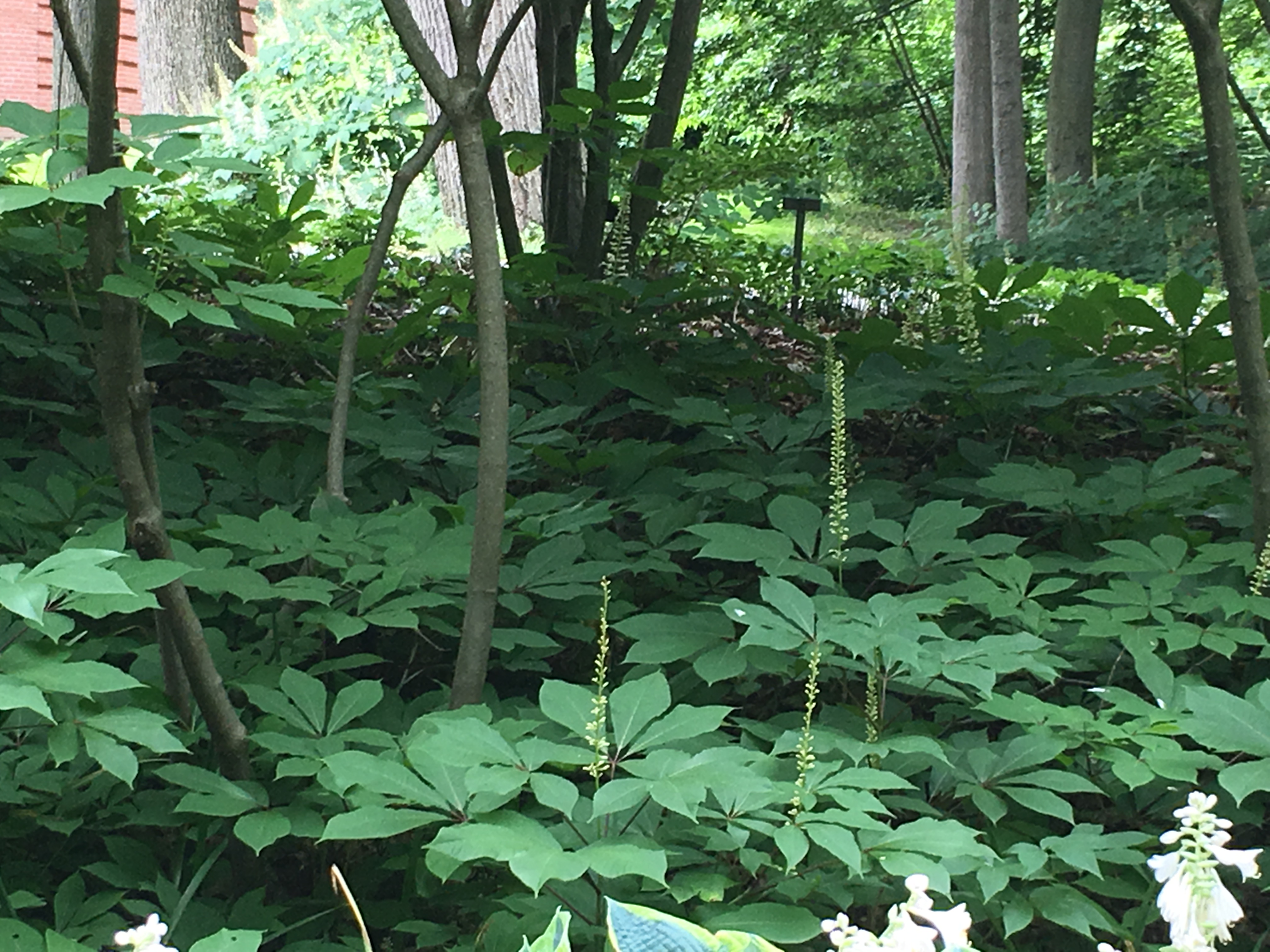
From here one can walk east toward what seems to be an impenetrable wall of high hedges, some ten feet to fifteen feet tall, of hemlock, and ubiquitous yew. These hedges are well worth seeing in their own right. How often does one see this scale of hedging executed and maintained so successfully?
These hedges enclose a series of formal, tiered, cascading terraces — ornamented at the very top by my favorite sculpture of the naked god Pan poised to play his pipe, with a playful goat wrapping itself around his knees, reminding us of Pan’s animal nature.

These terraces terminate some distance away, on down the slope,
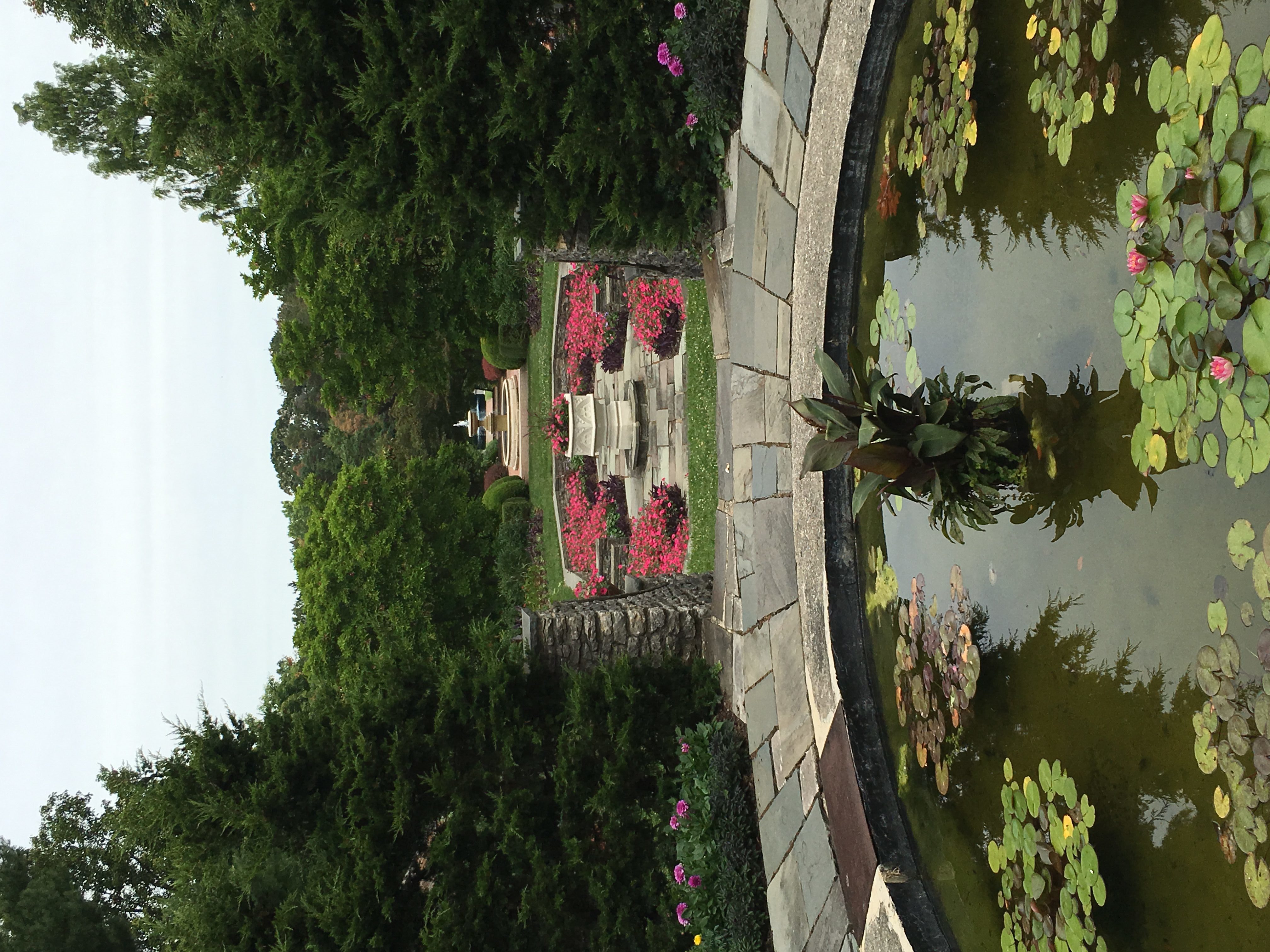
with an alcove set into a tall hedge, holding a sculpture of a lovely maiden – surely a tryst inducing place.

East of this folly the lawn opens out again and a path meanders through it, anchored here and there by perennial beds. From there one can wander into a conservatory and a retail plant shop. Here Kingwood grows all the annuals it plants in its various formal beds. North of the conservatory lies what was the service entrance to the estate and all the working areas of the estate; here a large u-shaped building once sheltered horses on one side and chickens on the other – one can still see the little doors that were opened so the chickens could run outside.
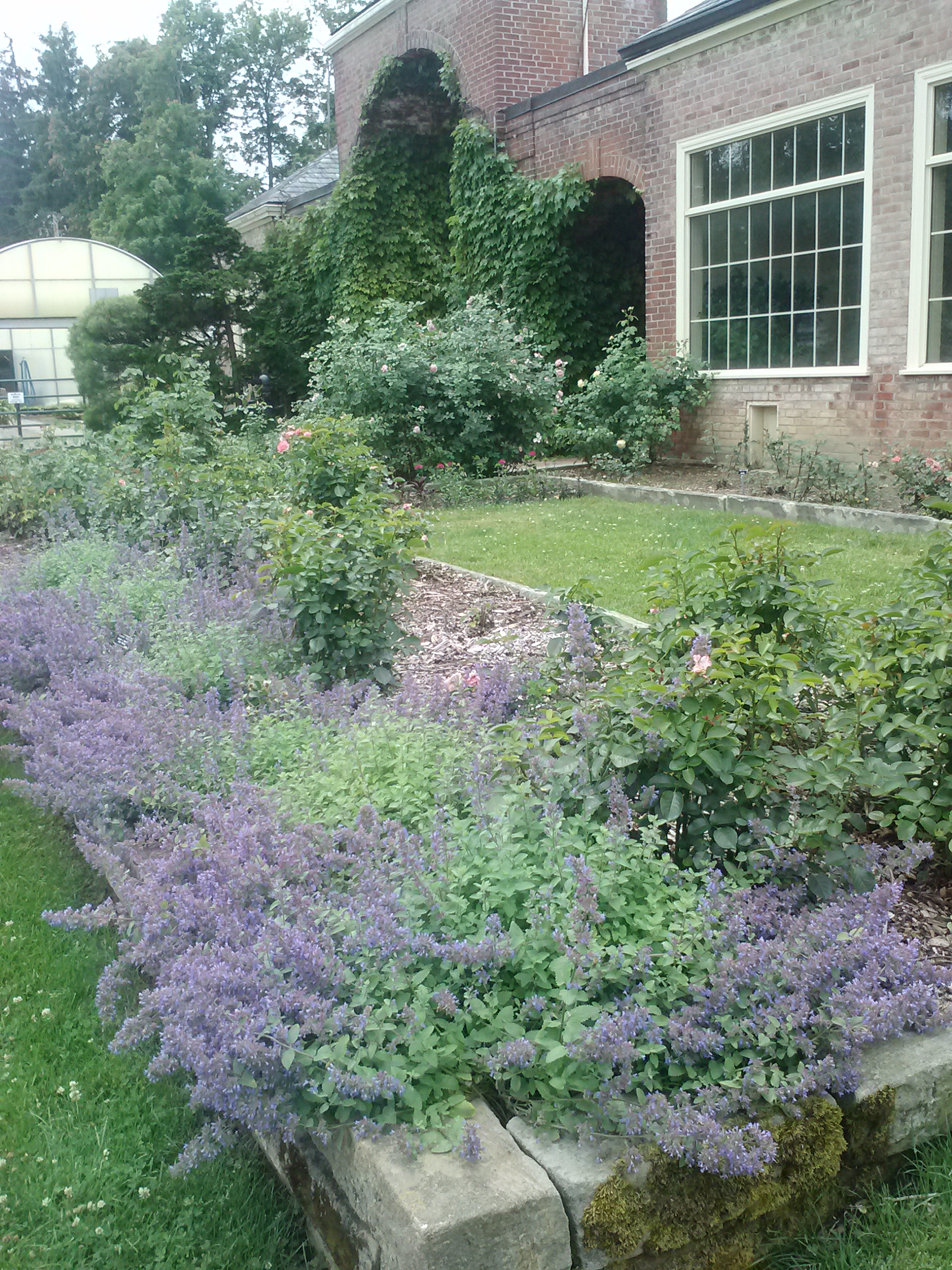
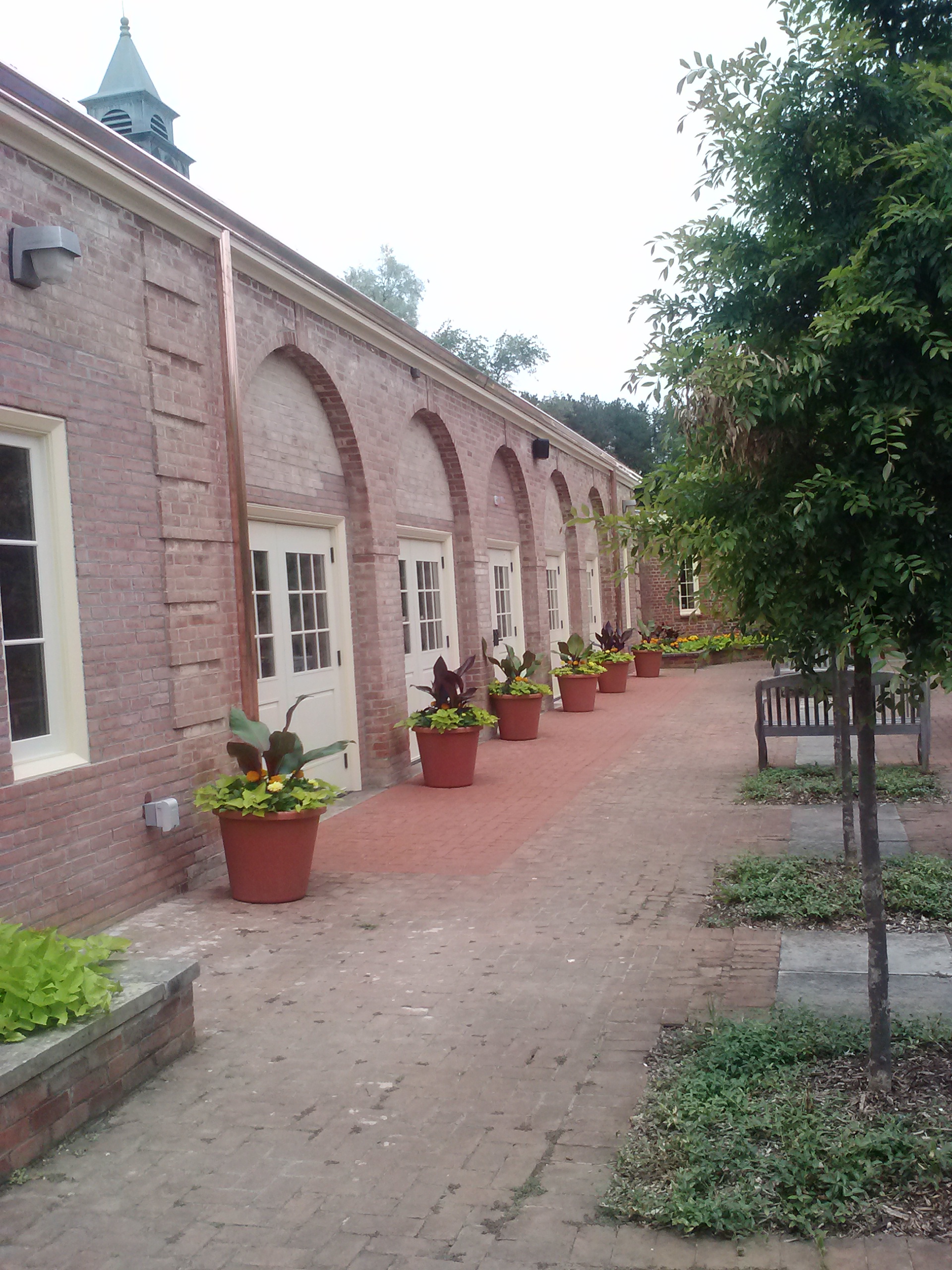 Today these buildings are used for events (Kingwood is a popular site for weddings) and garden shows.
Today these buildings are used for events (Kingwood is a popular site for weddings) and garden shows.
East of these is the rose garden, which leads on to an herb garden enclosed by a white pine hedge, and then over to the east end of the small lake/pond, where the space between the pond and the stable is being turned into (via a master plan) a terrace and a rain garden, with the water coming off of the roofs of the old stable buildings. These spaces, more intimate in their scale, feel more ‘gardeny’ and less ‘estatey’… and are a nice place to stop and eat that picnic lunch you brought with you, while the peacocks holler in the distance (warning – we’re not kidding about the picnic lunch — Mansfield has little to offer in the way of restaurants).
I like to end my visit to Kingwood in the perennial garden, tucked in the space between the sloping lawn esplanade off the entry court and a drive down from it. There are several huge cypress trees here with interesting knees poking up out of the ground.
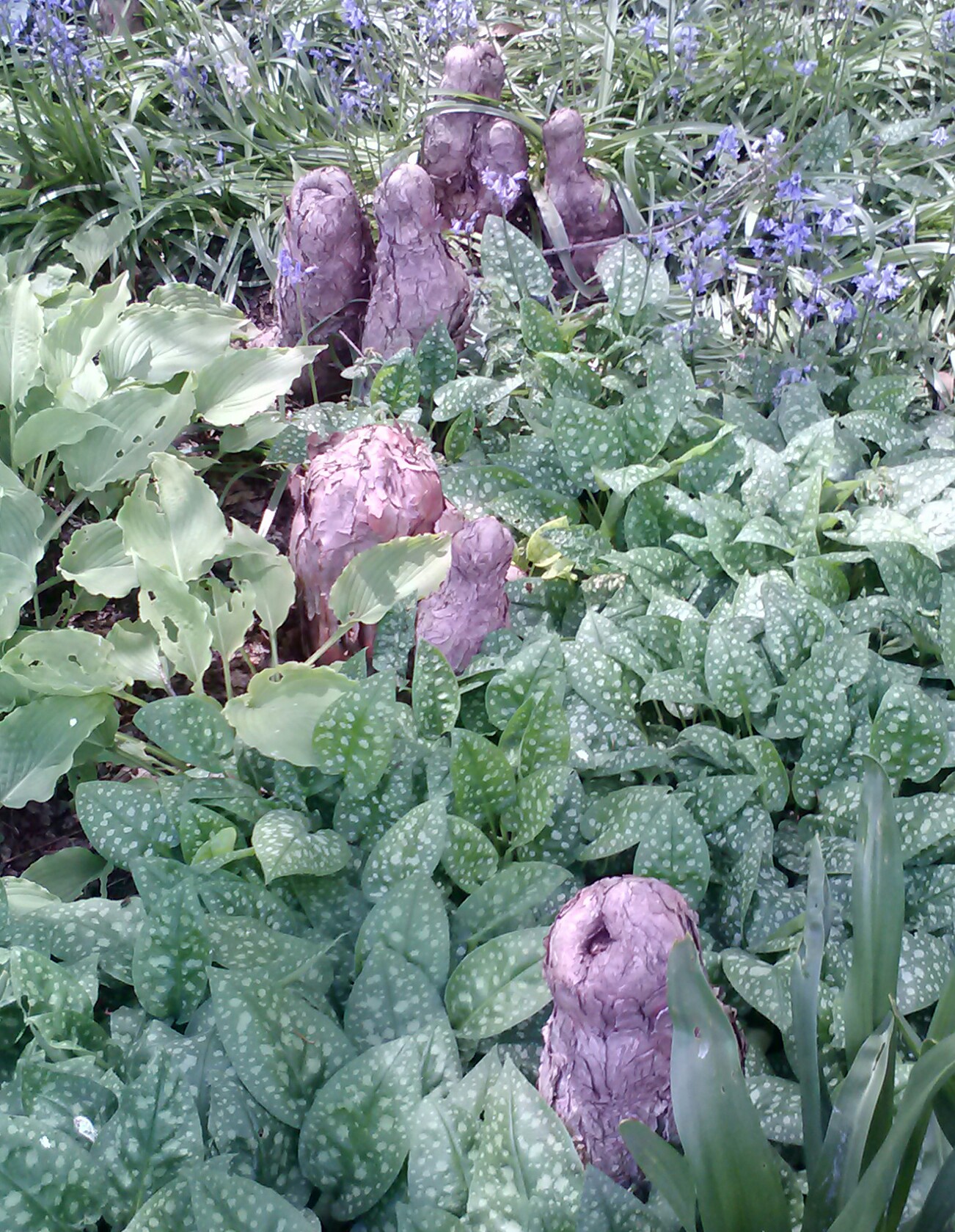
The perennials grow among them, swirling together in pleasing, loose, soft masses. Nothing formal about these.
We (co-editors Elsa Johnson and Catherine Feldman) would like to thank the Director of Kingwood Center Gardens, Charles Gleaves, who graciously escorted us on this most recent tour. From him we learned that the City of Mansfield provides Kingwood with leaves in the fall. These, shredded and composted, are then applied to the various beds, both permanent and annual – a practice we have written about in Gardenopolis Cleveland and encourage. After years of such application the result is a deep rich soil in which plants flourish, which is slow to dry out, even in our current drought.

****
If you have planned your time well you might still have time and energy for a quick visit to Louis Bromfield’s Malabar Farm, now a state park. Although more remembered for his fiction and semi-celebrity status, Bromfield also wrote agricultural treatises, and he made Malabar a working farm experimenting in innovative, scientific, sustainable framing practices. Bromfield believed that resource conservation – especially soil and water – was America’s biggest challenge.
We would say it still is.
****
